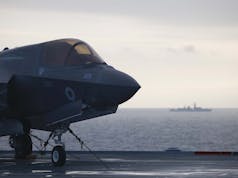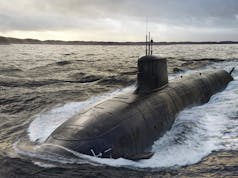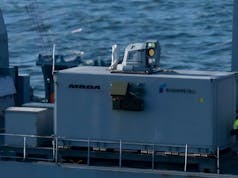The Royal Navy could soon deploy a new underwater robot designed to tackle sabotage attempts and legacy ordnance around pipelines and seabed cables, following successful trials led by the Defence Science and Technology Laboratory (Dstl) in partnership with UK industry.
In a statement issued on 9 June, the Ministry of Defence announced that a commercially available remotely operated vehicle (ROV) has been enhanced with new sensors, tools, and remote explosives placement systems, allowing it to safely identify and neutralise hazards underwater — including at depths beyond the safe reach of human divers.
According to Dstl, the trials demonstrated the robot’s potential to protect undersea infrastructure by identifying unexploded ordnance and placing charges to neutralise threats remotely. The system also reduces the need to place personnel in harm’s way during clearance operations.
“This technology would be a valuable toolset for keeping our Armed Forces safe whilst providing the public with value for money,” said a Dstl explosives engineer identified only as John. “This unique capability with its sensors, tools and cameras will give operators a real-time ability to deal with these underwater hazards in a safe, effective and efficient way.”
The robot can be launched from either a ship or shoreline and can remain submerged far longer than a human diver, with live video and sonar imagery transmitted to operators who then manage the response from a safe location.
Dstl said the system had been tested in multiple locations, including Horsea Island in Portsmouth, Portland Harbour, South Wales, and in Norway. It will work alongside other seabed surveillance robots, identifying threats and enabling their removal without endangering Royal Navy personnel.
Importantly, the robot is designed to be reusable rather than disposable. This not only lowers long-term costs but also ensures rapid redeployment if multiple threats are detected in a single mission. The project supports UK industrial jobs and has involved firms such as Alford Technologies, Atlantas Marine, Sonardyne, and ECS Special Projects.
The technology is being delivered under a Royal Navy-funded programme to enhance the UK’s seabed warfare capabilities, amid growing strategic concern over the vulnerability of critical undersea infrastructure.
Alongside the technical advances, the project has also focused on operational integration. Navy personnel have worked closely with Dstl specialists to develop new tactics and training methods tailored to the robot’s use.
The MoD described the robot as a cutting-edge asset that could enhance both safety and strategic deterrence at sea, and a demonstration of how collaboration between defence and industry continues to strengthen national resilience beneath the waves.














“’tis a mere drop in the ocean”.
ROV technologies and operations in sub surface industrial sectors has progressed so much in the past 10 years. These days many workclass ROVs [as depicted in image] are often supported by technicians (fitters) offshore while pilots and engineers are housed in collective command and pilot centres elsewhere in the planet..or hybrid models with 1 pilot / engineer at site and back-up / relief pilots remote. Makes for efficient operations.
Not much diiferent than earlier minehunter ROV’s except for the “off site” command and control.
not sure mine hunting ROV’s were rated for up to 4000 meters of water depth !
Good point.
Do we have a problem with unexplosed ordnance on the sea bed? I would have thought that was a low priority. Far more important would seem to be (a) identifying cut cables and remotely-operated explosives on pipelines and (b) repairing damage to both. No doubt this UUV can do the former, but who does the latter?
Is it part of the task for the Proteus MROS ship or do we pass the problem to private contractors? Still trying to work out whether Proteus is a good comprehensive solution to anything or just a partial answer.
ECA 104 paps of the 21st century ? Another rung on the ladder of tech that removes harm coming to CDs . Route surveys and strategic undersea cables can now be conducted without fear of losing any personel.